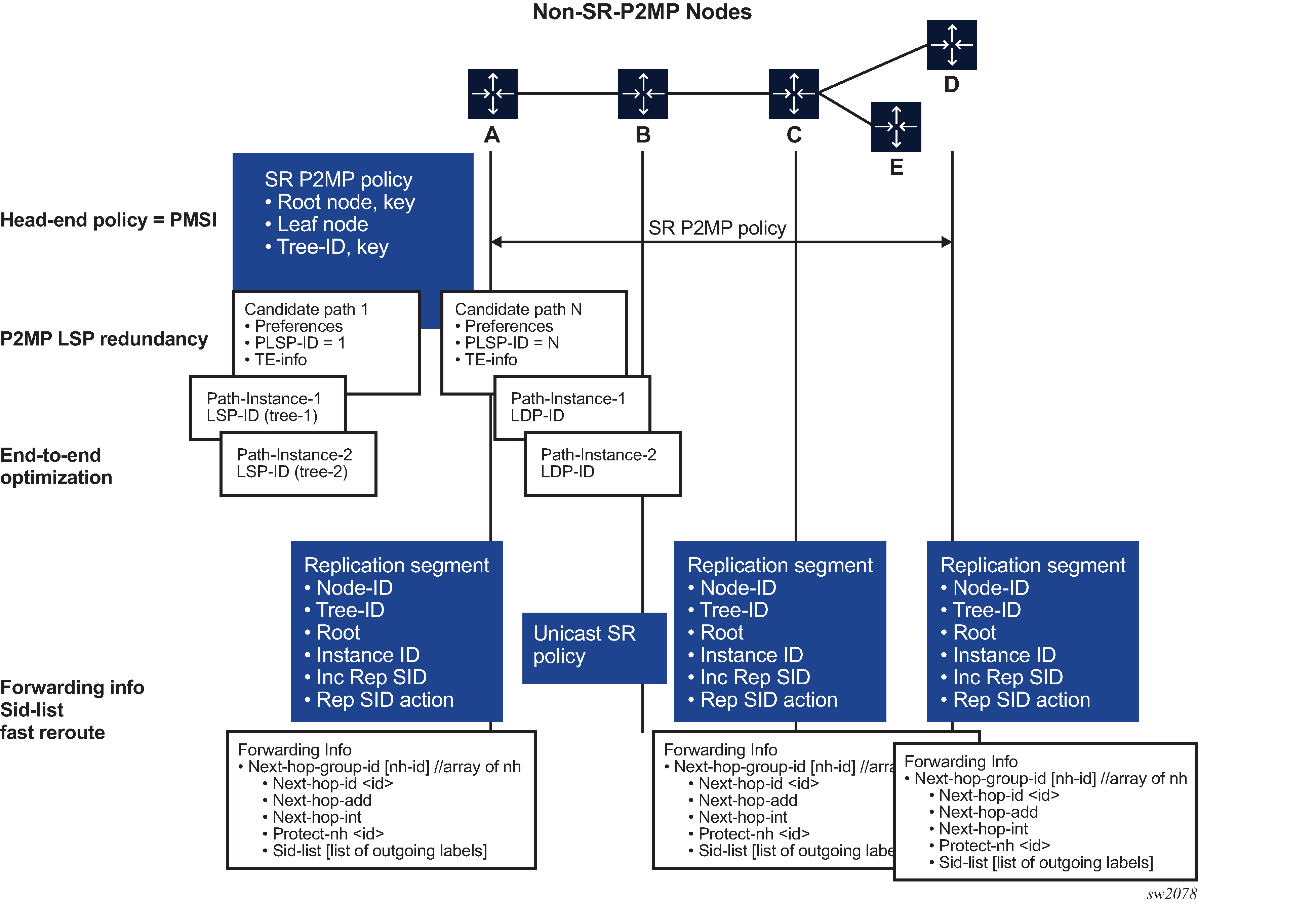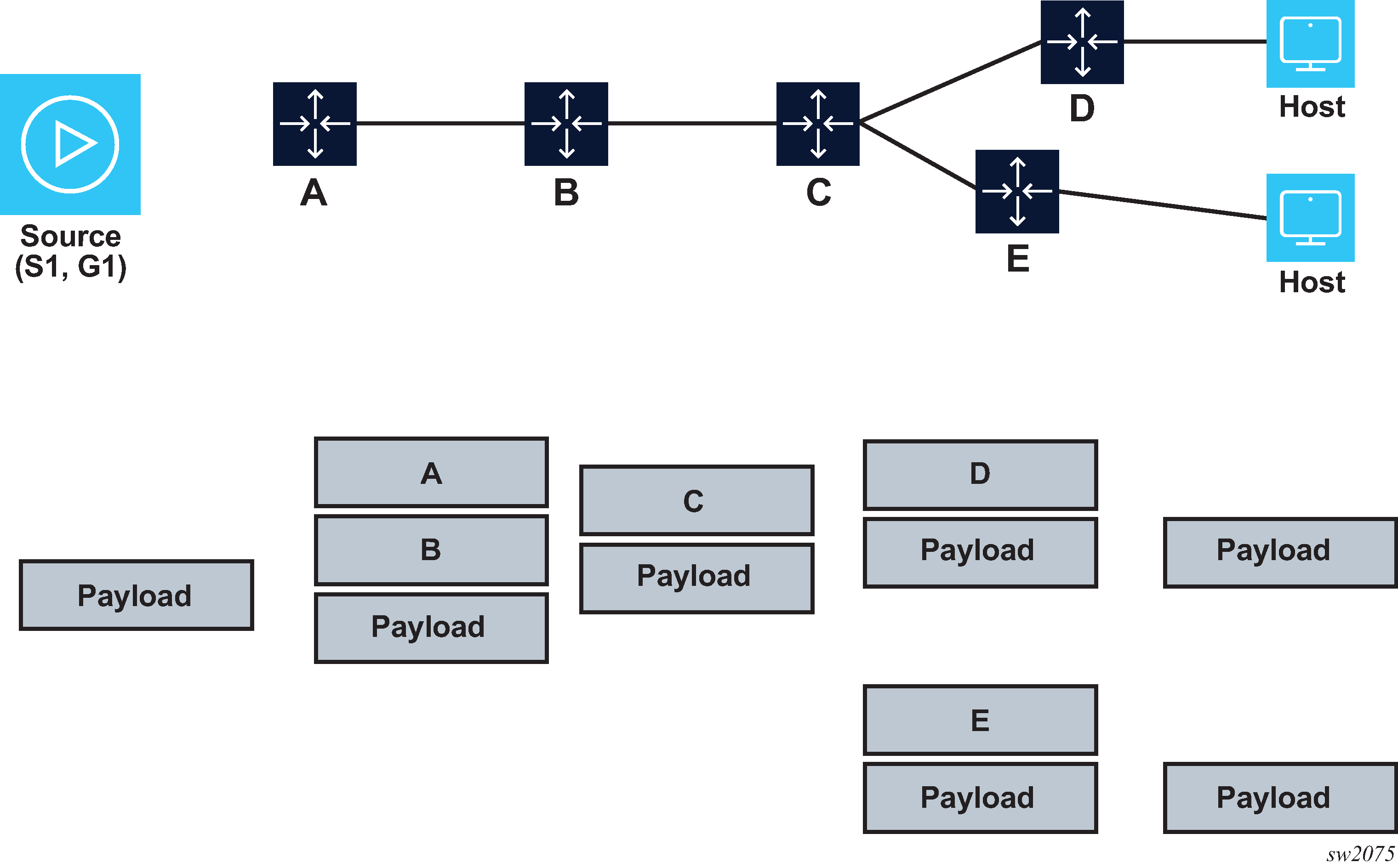In the following figure, nodes A, C, D, and E are replication-segment capable and B is unicast SR capable (that is, B is not replication-segment capable).

Multiple CPs can exist under a P2MP policy. The CPs act as tree redundancy. There can be only one active CP in the P2MP policy, based on the CP preference. The highest CP preference is the active CP.
Multiple path instances can exist under a CP. Each path instance is a P2MP LSP and each instance is presented with an instance ID. Path instances can be used for global optimization of the active CP. Each path instance is built using replication segments, which forward P2MP tree information through the network at the root, transit, and leaf nodes. The P2MP policy is correlated to its replication segment by its root ID, tree ID, and instance ID.
The replication segments forward information with one or more OIFs to replicate and forward the PDUs. On the transit and leaf nodes, the incoming replication SID identifies the replication segment and its forwarding information. The replication segment can also contain FRR information for each of the outgoing interfaces.
The two replication segments on router A and C can be connected to each other using a unicast SR policy. To do so, the replication segment on router A is programmed with a SID list. The replication SID of router C is at the bottom of the stack and the SR labels connecting A to C are on top of the stack (that is, adjacency SIDs or node SIDs).
In Figure: Packet representation of a multicast stream, node B is not replication-policy capable, so node A pushes the SID list of B and C, where C is the replication SID at the bottom of the stack and B is the node SID.
